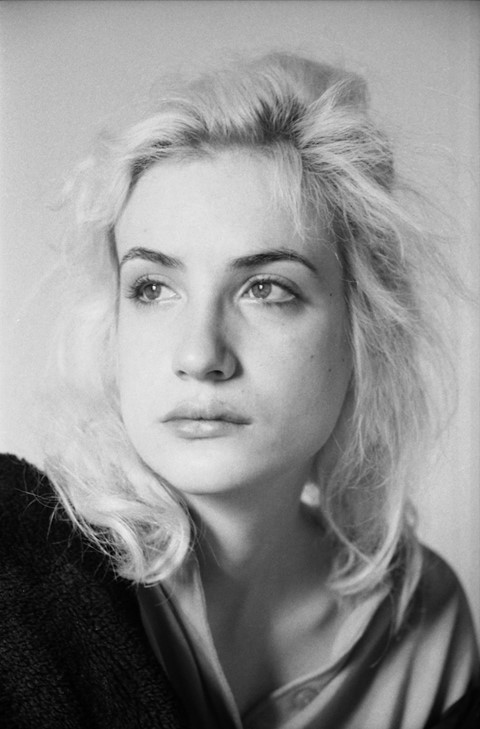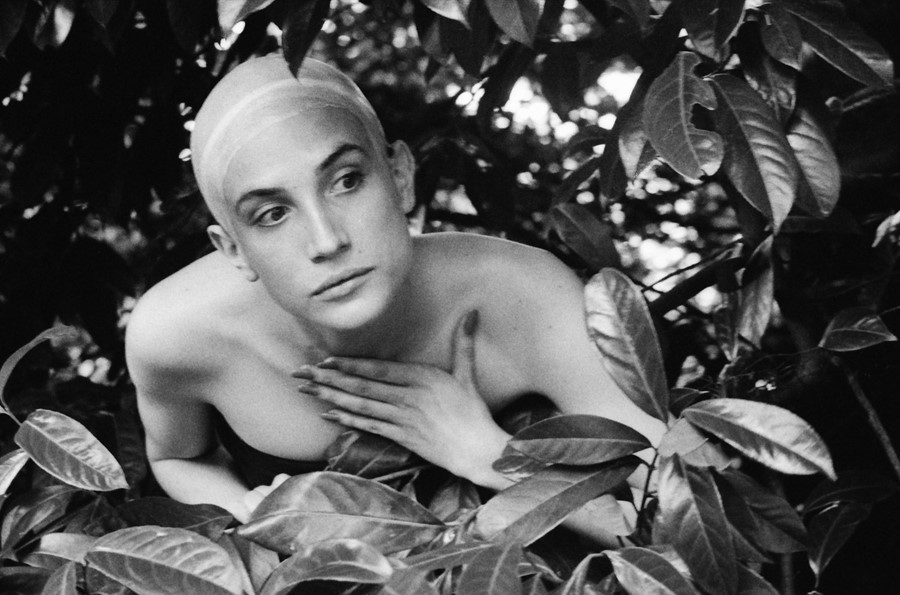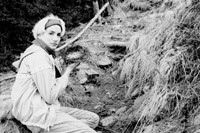A new book documents the colourful life of Éve-Claudine Lorétan – alias Coco – the Swiss anarchist and model whose life was cut short
Éve-Claudine Lorétan – alias Coco – met photographer Olivier Fatton on a Sunday in November 1989, at a sauna in Bern, Switzerland. Their meeting would mark the final act of Coco’s short life, in which she was at once fashion model, performance artist, and tabloid sensation.
“We fell in love at first sight,” Fatton says, speaking through a translator from Paris. “I had the impression I just met an angel. At the time, I was really drawn to aesthetics. Coco looked so beautiful that I just wanted to take pictures of her.”
Before meeting Coco, Fatton, 32, had been photographing male nudes in staged scenes, awash with beauty but empty of love. Their connection was absolute and instantaneous. They went for coffee, then to bed, in short order.
“I want to be your model. In return, you’ll document my transformation. I’m going to have a sex change,” Coco told Fatton, as he recounts in a new book, Coco.
The meeting would seal their fates. They spent the night together at her parents’ home, where she still lived. The next morning, Fatton made his first photographs. They joined her parents for lunch, where her mother made Fatton promise he would never leave Coco. It was a promise he did his best to keep.
Just 20 years old, Coco’s colourful public life – which caught the attention of the Swiss tabloids after Paul Riniker’s documentary on her sexual reassignment surgery Traum Frau Coco (1991) was watched by over 600,000 people – distracted from grim realities of her day-to-day life, where she worked as a cleaning lady at a mental hospital in order survive.
“It was quite hard for Coco to manage everything,” Fatton says. “Sometimes it led to a crisis for her. I was there for her when she was sad. It was not an easy thing to live [through] – and sometimes, it was too much.”
Coco, who had been taking illegally purchased hormones since the age of 13, fluctuated between intense cycles of trauma and recovery. With Fatton, she was cherished and loved – safe and celebrated as an icon of beauty, glamour, and art. Beneath, lay the marks of childhood sexual abuse.
Coco shared her grief with Fatton from the very first day they met – just as she shared her growing doubts and fears about gender reassignment surgery as the day of the operation began to near. “She was hoping she would never wake up from it,” Fatton says.
To help, Fatton suggested they travel to the mountains for a change in scene. “Coco wasn’t just a nighthawk fixated on her body and frivolous fashion. She loved the mountains. She’d done a lot of mountaineering and knew the peaks well. We went to the mountains in Ticino twice,” Fatton says in the book.
“The first time was for a ‘survival week’ before her operation. The second time was to take pictures for her press book. At Sassello Pass, I immortalised Coco against a dizzying alpine background… In Ticino I met the Being that Coco was hiding, a magnificent person.”

In his photographs, Fatton captured the radiant soul of a young woman who had the courage to live as her true self. Though Coco was prepared to die during surgery, she did not — though the realities would prove torturous.
The surgeon made a grievous error, requiring her to undergo further surgery in order to correct this horrific mistake. The doctors then over-prescribed morphine and Coco was hooked. Unable to quit, she was driven to overdose. Addiction would be her end, at the age of 29 in 1998.
“She was a pioneer,” Alexander Seibt, author of the 2018 musical Coco – A Transgendermusical, told Der Bund. “She was one of the first to publicly say in Switzerland: I am a transgender. She has touched us all with her chutzpah.”
Though 20 years have passed since her tragic death, Coco’s life and legacy are a testament to her impeccable prescience. What remains of her once vivid life are the photographs Fatton took, which show the singular, defiant woman she once was.
“The book was a way of going through mourning, and a rediscovery of photographs I never saw,” Fatton says. “It was a way to put the pain behind me, to turn the page on this story, and to honour Coco’s life. Rediscovering the pictures lead to a lot of emotions. It was like finding Coco again.”
Coco is available now, published by Edition Patrick Frey.






